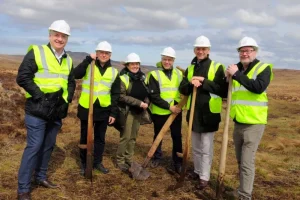It says this marks the completion of an Integrated System Test (IST) campaign in which a staged-combustion Helix engine was integrated into an upper stage tank system and hot fired several times up to full duration in the final test.
Specifically, 280 seconds – roughly four and half minutes – of steady-state combustion proved the functionality of all upper stage systems, including fueling processes, fuel management, pressurization, sensors, propulsion and control. The company says valuable data was collected for further engine and stage optimization, and it will now focus on the assembly of the first stage and continue the construction work on the launch pad.
The testing was carried out at the Esrange Space Center in Sweden, and apparently it is the first time in Europe that a privately developed combustion upper stage has been successfully hot fired.
“This successful test is a massive leap forward for us,” said Dr. Stefan Tweraser, the CEO of RFA. “It’s a full confirmation of our strategy to develop a small launcher that is both very powerful and achieves cost-leadership. With this full duration test we have demonstrated again that we are able to complete more milestones with less, but smarter investments than any of our competitors.”
SaxaVord Spaceport
RFA has already chosen the SaxaVord Spaceport on the Shetland Islands to be the location for its first launch. The two organisations, at the start of the year, announced a multi-year launch operations partnership.
Under the terms of the deal, RFA will have exclusive access to Launch Pad Fredo for orbital launches. It also includes “investments in the double-digit million pound range”, said the parties.
The German startup is developing a three-stage RFA One orbital launch vehicle and the spaceport – located on the Lamba Ness peninsula site in Unst – will be hosting its debut launch, which is currently planned for the end of 2023.
Spaceport Esrange
 In January 2023, Sweden officially inaugurated Spaceport Esrange (right) as an orbital launch site, which already hosted rocket testbeds, high altitude balloon research and a civilian satellite ground station.
In January 2023, Sweden officially inaugurated Spaceport Esrange (right) as an orbital launch site, which already hosted rocket testbeds, high altitude balloon research and a civilian satellite ground station.
Described as a “polar gateway to space”, the location is Kiruna in the very north of Sweden, which is above the Arctic Circle (68°N, 21°E) and has access to a vast, unpopulated impact and recovery area.
See also: RFA One gets Boost! for commercial space transportation
 Electronics Weekly Electronics Design & Components Tech News
Electronics Weekly Electronics Design & Components Tech News




